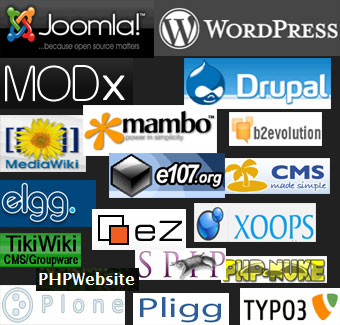CMS (content management systems) In Web Design
Designing a successful website has always been a long process, from concept to design and layout to coding, implementation and then testing and deployment. Sites that required more then a handful of pages and needed to be updated on a regular basis could provide to be steady work for a web designer, but it could also become overwhelming when site rebuilds are needed, new functionality needs to be installed or changes on a continuing basis need to be made.
The option to break a website up into segments utilizing PHP calls, most commonly a header, footer, right and / or left sidebar and main content has always been a possibility for years, it’s required long hours of coding and continuous testing, all by hand. Content management systems, or CMS for short, have helped redefine how websites are built on both small and large scales.
At the core, a CMS is a database, usually MySQL, that allows users to create, edit and store content (HTML) and manage it all from one centralized location. CMS is the framework that holds your site together and you fill it with your content. This framework is installed on your web server and then accessed through a web browser to the administration area, typically called the back end. For web visitors, the site appears as nearly any other website on the Internet.
Choosing to build your site with a CMS has many advantages, from allowing others within your company to quickly edit, add or remove specific content on pages or deploy pages on their own to the flexibility of managing the entire site from one centralized back end location; no more need to keep all the pages of your site on a local drive to edit in a text editor then FTP to your server. CMS allow you to focus your time on content, not coding, since most all of the popular models include a very straight forward what you see is what you get editor, commonly called a WYSIWYG.
The other huge advantage to CMS is the speed and flexibility to easily install and launch thousands of the most common and helpful web applications. Each application of CMS has their own terms for what they call these add-ons, some are called plugins while others refer to them as widgets or modules. These add-ons install in seconds and can give you functions like photo galleries, contact forms and even social media bookmarkers, all of which would have taken hours to install manually page by page.

